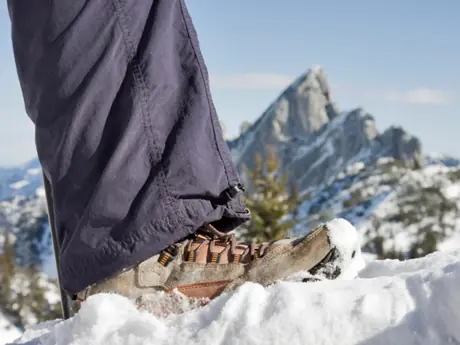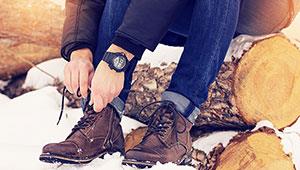
Shopping for winter hiking boots can be confusing. Your feet need to be warm and protected from wet snow—all-leather boots are perfect for this—but they should also be able to breathe while you hike, and leather boots are often far from breathable.
Before you get discouraged, learn more about the most important features and materials. When you know what to look for, your perfect pair of winter hiking boots will shine through the dizzying maze of options.
More: 5 Ways to Enjoy Nature This Winter
1. Well-Rounded Protection
The key to a great pair of winter hiking boots is the protection they offer your feet while trudging through deep snow, across an icy pond or up a steep, slushy hill. There are a few variables that work together to keep your feet fully protected from the elements. When you choose your winter hiking boots, look for:
Waterproof materials: A Gore-Tex inner lining helps keep your feet dry. Rubber lowers (around the bottom of your foot) and leather uppers (around your ankle) will help to keep water and wet snow out, as well. For a short, easy winter hike, you can waterproof any pair of hiking boots with a spray coating. Let the boots sit for 24 hours to become fully waterproofed.
Removable liners: If the inside of your boots do get wet, you can take them out to dry at your campsite or back at home.
The right cut: Hiking boots come in various styles including low-cut and mid-cut to high-cut, and each one has its own specific benefits. For winter hiking boots, buy a pair that's mid- to high-cut, which will support your ankles in the treacherous winter terrain and help keep snow and water out.
More: 5 Winter Safety Tips for Heading Outside
2. Insulation
One of the most common insulating materials found in winter hiking boots is Thinsulate, which is used by companies like Sorel. This material provides warmth without being bulky. Other well-insulating materials include wool, Zylex and polypropylene. Regardless of the material you choose, try to find boots with:
- 400 to 800 grams of insulation.
- Double-layer insulation for really cold hikes. Single only has one layer of insulation, usually provided by the inside materials, while double layer boots have both an inner and outer boot with insulation. For a basic winter hike, a single layer is fine. For extreme hiking and winter camping, consider a double layer style.
- 1
- of
- 2
About the Author











Discuss This Article